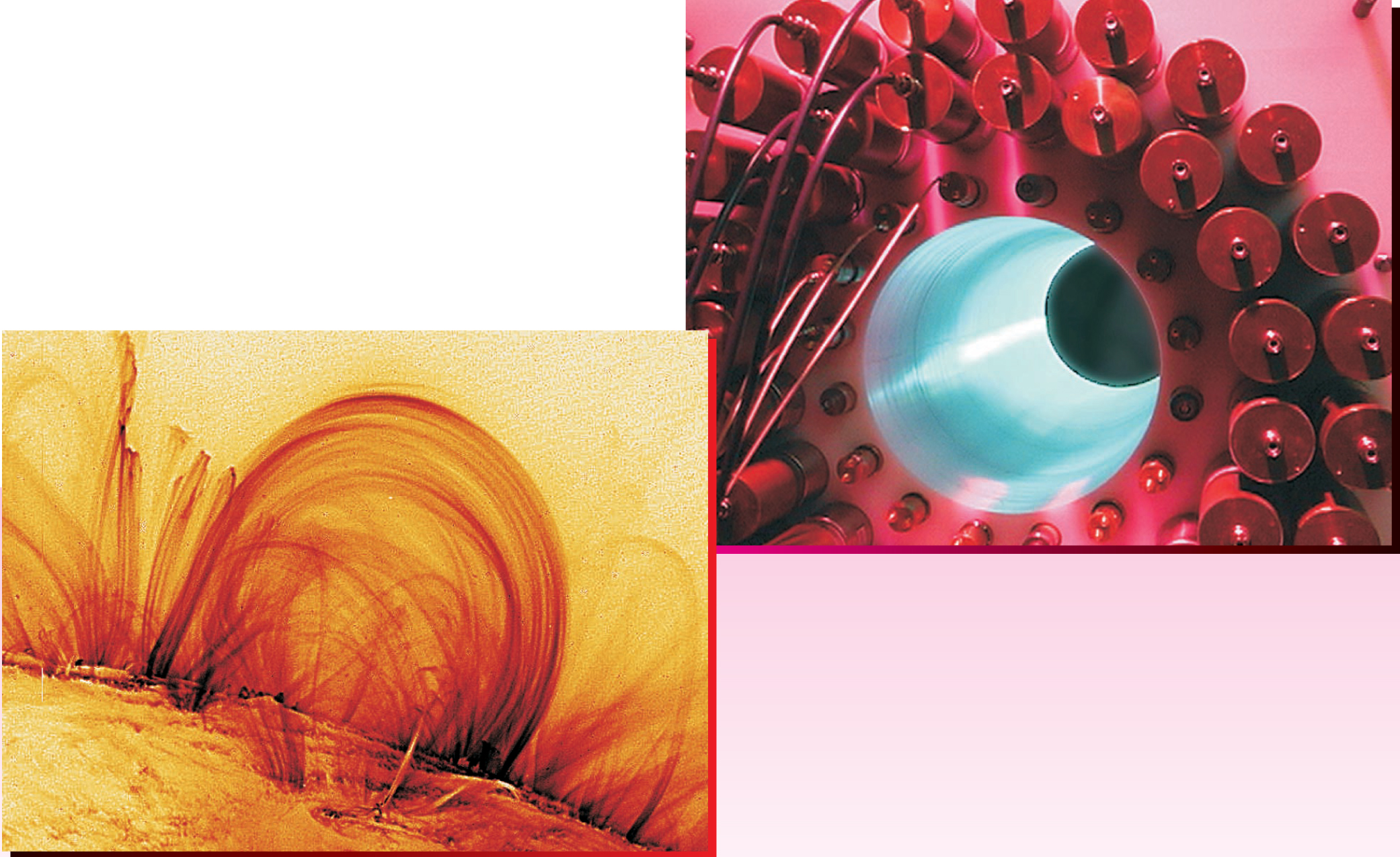Centers Strengthen Ties Between Lab Experiments and Astrophysics
DOI: 10.1063/1.1650064
Commonalities between plasma behavior in lab experiments and astrophysical objects are what scientists plan to explore and exploit with the Center for Magnetic Self-Organization in Laboratory and Astrophysical Plasmas, while the nuclear reactions that power stellar processes are the focus of the Joint Institute for Nuclear Astrophysics (JINA). NSF’s two newest Physics Frontier Centers (see Physics Today, November 2001, page 28
The magnetic self-organization center has six interlinked themes: dynamo effects, magnetic reconnection, angular momentum transport, anomalous ion heating, magnetic chaos and transport, and magnetic helicity conservation. “It turns out that physicists working in plasmas and astrophysics puzzle over similar phenomena,” says Stewart Prager, an experimental plasma physicist at the University of Wisconsin-Madison and the center’s principal investigator.
Astrophysical conditions cannot be reproduced in the lab. But detailed study of, say, dynamos or magnetic reconnection could shed light on what goes on out in the universe. For example, says Masaaki Yamada, who heads the Magnetic Reconnection Experiment (MRX) at the Princeton Plasma Physics Laboratory (PPPL), “we create two plasmas and let them merge. The magnetic field lines also merge—they break up and reconnect. During this process, the plasma is heated and ions and electrons are accelerated. It has elements that apply to solar flares.”
“From lab experiments, we can get a confirmation or lack of confirmation of what is really going on. It’s the best way to learn the physics,” adds Madison astrophysicist Ellen Zweibel. “We would like to develop simulations and theoretical extrapolations as a way of scaling the results up and creating a bridge to astrophysical systems.”
The same is true for JINA, whose scientists are pursuing two main lines of inquiry: What is the origin of chemical elements heavier than iron? And how does matter behave at extreme temperatures and densities? In both cases, says JINA director Michael Wiescher of the University of Notre Dame, “the microphysics—the nuclear reactions—is the driver.”
Nucleosynthesis occurs deep in the interior of stars, supernova shock fronts, and cataclysmic binaries. By coupling computational modeling and spectroscopic observations of chemical abundances in astrophysical systems, the key nuclear reactions can be identified—from among tens of thousands—and then recreated and studied using accelerators, says Wiescher.
In probing behavior at extreme conditions, JINA scientists will focus on neutron stars and other compact objects. Specifically, they’ll look at x-ray bursts, which occur when accreted material explodes due to thermonuclear fusion reactions. X-ray bursts “involve exotic nuclei that have hardly been studied. We want to make the link between the observations and the properties of the overall system,” says Hendrik Schatz of Michigan State University. At the center’s disposal are the rare isotope research facility at Michigan State and accelerators at Argonne National Laboratory and Notre Dame.
NSF has awarded JINA $10 million and the magnetic self-organization center $11.25 million over five years. JINA’s founding members are Notre Dame, Michigan State, and the University of Chicago, which have since formed strong ties with Argonne, the University of Arizona in Tucson, and the Santa Barbara and Santa Cruz campuses of the University of California.
The magnetic self-organization center will use its NSF money—plus $500 000 a year from the US Department of Energy for the center’s national lab participants, PPPL and Lawrence Livermore National Laboratory—mainly for hiring postdocs and graduate students and facilitating communication among center members. In addition to Madison, Princeton, and LLNL, the members are the University of Chicago, Swarthmore College, and the La Jolla, California, branch of Science Applications International Corp. Because of their strong fusion programs, the four major experiments involved—the MRX, Madison Symmetric Torus, Swarthmore Spheromak Experiment, and Sustained Spheromak Physics Experiment (at LLNL)—are on DOE’s books.

The twisted magnetic field lines on the solar surface (left) are a sign that energy is being deposited into the field. Will a flare occur at this spot? Insights into astrophysical processes and basic plasma behavior are the goals of the new Center for Magnetic Self-Organization in Laboratory and Astrophysical Plasmas. The NERO detector (above) will be used at the various accelerator facilities of the Joint Institute for Nuclear Astrophysics to study nuclear decay processes such as those that occur in supernova explosions and to explore stellar neutron sources.

More about the Authors
Toni Feder. tfeder@aip.org
